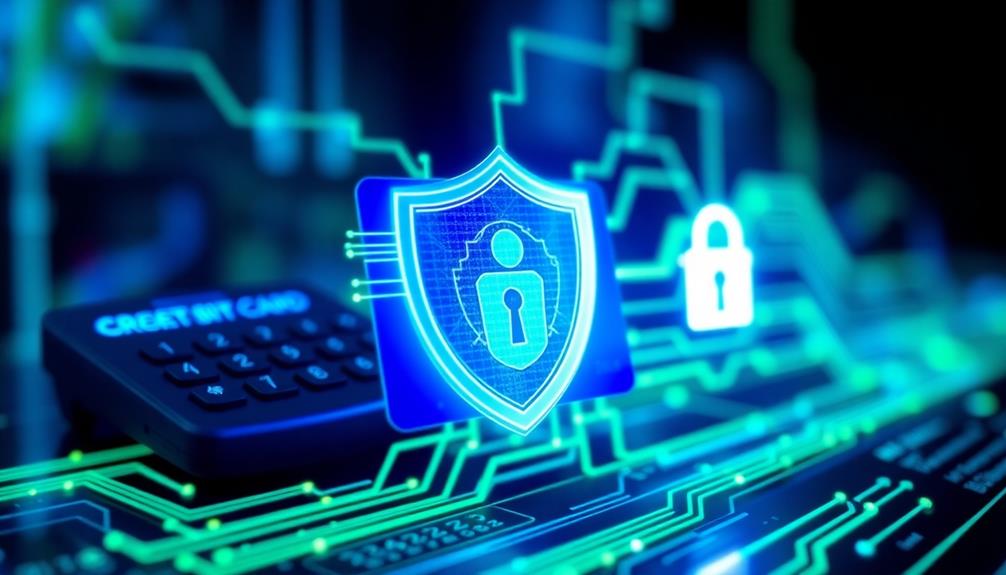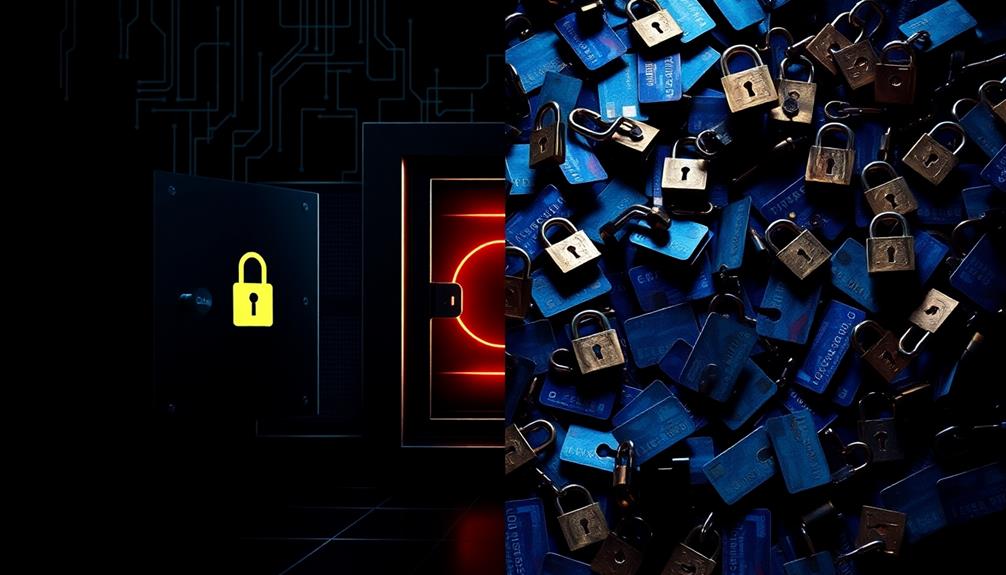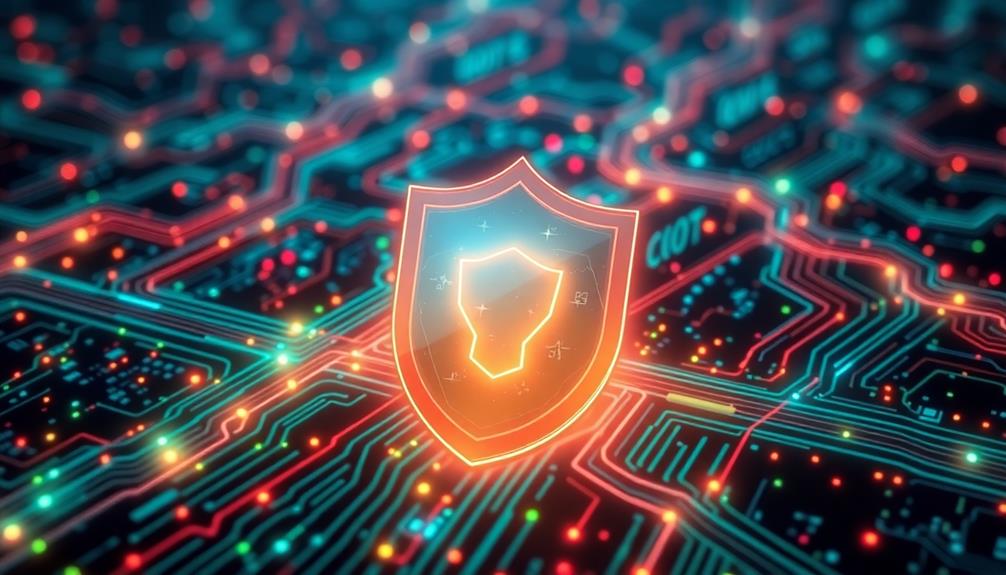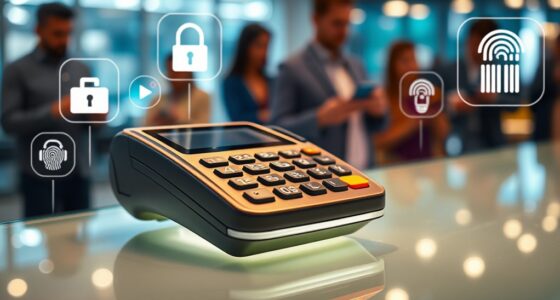Point-to-Point Encryption (P2PE) is essential for securing card data as it encrypts sensitive information right at the point of entry. This process makes data unintelligible, reducing the risk of fraud for both merchants and customers. P2PE utilizes tamper-resistant modules and cryptographic keys to guarantee unique transaction security while transmitting encrypted data across public networks. By adopting P2PE, you can also streamline compliance with PCI standards, cutting down the questions by 90%. Understanding how to implement and maintain these solutions can greatly enhance your payment security. There's much more to uncover about how P2PE can benefit your operations.
Key Takeaways
- Point-to-Point Encryption (P2PE) secures cardholder data immediately upon entry, making it unintelligible and reducing the risk of fraud.
- P2PE employs tamper-resistant security modules and cryptographic keys to ensure unique transaction security during data transmission.
- Encrypted data is transmitted over public networks to payment gateways, where it is decrypted in secure environments managed by payment processors.
- Implementing P2PE significantly reduces PCI Compliance questions from 328 to just 33, streamlining the compliance process for merchants.
- P2PE enhances customer trust by providing secure payment processing and supports various payment methods for improved efficiency.
Understanding Point-to-Point Encryption

Understanding Point-to-Point Encryption (P2PE) is essential for anyone involved in payment processing. P2PE plays a vital role in securing cardholder data by converting it into an unintelligible format right at the point of entry. This means that once a card is swiped or dipped, the encryption process kicks in immediately, ensuring sensitive information remains secure during transmission to the payment processor.
In addition to enhancing security, these measures can greatly reduce the risk of fraud and protect both the merchant and the customer from potential losses, as highlighted by personal debt forgiveness options.
In a merchant environment, implementing P2PE greatly enhances Data Security and minimizes the scope of PCI Compliance. By using validated point-to-point encryption solutions, assessed by a P2PE Qualified Security Assessor (QSA), you can reduce annual compliance questions from 328 to just 33. This streamlined process helps you focus on running your business while maintaining robust security measures against data breaches.
Tamper-resistant security modules (TRSM) in payment devices further protect your customers' cardholder data from unauthorized access. With cryptographic keys at the heart of this encryption, every transaction is uniquely secured, making it a reliable option for secure payment processing.
How P2PE Works

Utilizing Point-to-Point Encryption (P2PE), cardholder data is secured the moment it's entered into a payment device. The encryption process transforms sensitive information into an unintelligible format, protecting it from potential threats. This process employs the Derived Unique Key Per Transaction (DUKPT) algorithm, which generates a unique key for each transaction. This adds an additional layer of security against data breaches, guaranteeing that even if data is intercepted, it remains useless.
Additionally, the integration of automation's role in business intelligence enhances the efficiency of data processing within payment systems, making them more resilient against vulnerabilities.
Once the cardholder data is encrypted, it's transmitted over public networks to a payment gateway. Here, the data is decrypted in a secure environment, typically managed by the payment processor. This guarantees that only authorized users with the correct decryption keys can access the original cardholder information.
P2PE solutions utilize tamper-resistant hardware, known as Point of Interaction (POI) devices, which safeguard encryption keys and protect against physical attacks like skimming. By implementing these robust security measures, the payments industry can greatly reduce the risk of data breaches, guaranteeing that cardholder data remains secure throughout the transaction process.
Benefits of P2PE

One of the standout advantages of Point-to-Point Encryption (P2PE) is its ability to enhance security by encrypting cardholder data right at the point of entry. This means that even if data is intercepted during transmission, it remains encrypted and virtually worthless to hackers.
By implementing P2PE solutions, you markedly reduce the scope of PCI DSS compliance, cutting down the number of questions in the Self-Assessment Questionnaire from up to 328 to just 33. That's a remarkable 90% reduction in compliance complexity. Additionally, businesses can benefit from cost-effective security measures like security system pricing, which can further protect sensitive information.
Moreover, using P2PE can lower your cybersecurity insurance premiums, as it showcases effective security controls and risk mitigation strategies. This not only protects against data breaches but also helps build customer trust in your payment processing practices.
When customers know their sensitive cardholder data is secure, their confidence in your business increases. Additionally, P2PE supports various payment methods, including EMV and mobile payments, enhancing payment processing efficiency.
The robust encryption algorithms used in P2PE guarantee that your security measures are high-quality, making your business a safer place for transactions.
Implementing P2PE Solutions

Implementing P2PE solutions requires careful planning and execution to maximize the security benefits outlined earlier. First, you'll need to select certified providers from PCI-approved vendors to guarantee compliance with industry standards.
Integrating P2PE with your existing payment systems is essential; this involves configuring both hardware and software to encrypt cardholder data right at the point of entry. Additionally, utilizing merchant account credit processing can streamline your payment processes and enhance customer satisfaction.
Training your staff on P2PE protocols is fundamental. Make sure your personnel understand the importance of encryption and adhere strictly to security measures. Regular maintenance is also key—updating encryption keys and software protects against evolving threats and helps maintain compliance.
Lastly, continuous monitoring for compliance and security threats is critical for the successful implementation and operation of P2PE solutions. Establish a robust key management process, guaranteeing that all encryption keys are handled securely.
Challenges of P2PE

Despite the numerous benefits of Point-to-Point Encryption (P2PE), merchants often encounter significant challenges during implementation and operation. One major hurdle is the initial costs involved in acquiring certified solutions and integrating them with existing payment systems. You'll also need to manage encryption keys effectively and guarantee ongoing software updates to maintain compliance with P2PE security standards.
Integrating P2PE with legacy systems can complicate operations, possibly causing increased downtime or transaction delays. Regular training for employees on security practices is essential to mitigate risks associated with human error in handling sensitive card data. Additionally, there's potential for vulnerabilities in the transmission of encrypted data between the payment gateway and issuing bank, requiring careful monitoring.
Here's a quick overview of these challenges:
| Challenge | Description | Mitigation Strategies |
|---|---|---|
| Initial Costs | High acquisition and integration expenses | Budget planning |
| Key Management | Difficulty in managing encryption keys | Use of key management systems |
| Integration Complexity | Operational hurdles with legacy systems | Consult payment experts |
| Employee Training | Risks from human error in handling data | Regular training sessions |
| Data Transmission Vulnerabilities | Risks in encrypted data transmission | Implement robust security protocols |
Frequently Asked Questions
What Is the Best Encryption for Data in Transit?
When it comes to securing data in transit, you should consider using advanced encryption methods like AES or TLS. These technologies provide strong protection against interception, ensuring your sensitive information remains safe during transmission.
What Is Point-To-Point Encryption P2PE Solution?
Think of it as a secure tunnel for your sensitive data. Point-to-Point Encryption (P2PE) encrypts card information from entry to processor, keeping it safe from prying eyes and greatly easing your compliance burden.
How Does Encryption Protect Data in Transit?
Encryption protects your data in transit by converting it into an unreadable format. This guarantees unauthorized users can't access sensitive information while it travels over networks, keeping your transactions secure and confidential.
What Is the Difference Between PCI and P2PE?
Imagine a fortress protecting treasures—PCI sets the walls and gates, while P2PE acts as a secret tunnel, encrypting treasures during their journey. You'll find PCI's broad rules contrast sharply with P2PE's focused encryption magic.
Conclusion
In a world where data breaches seem to lurk around every corner, embracing Point-to-Point Encryption (P2PE) is like fortifying your castle against relentless invaders. By implementing P2PE, you're not just protecting card data in transit; you're investing in peace of mind for both your business and customers. While challenges exist, the benefits far outweigh them. So, take the leap—secure your transactions and watch your trust and reputation soar to new heights!










